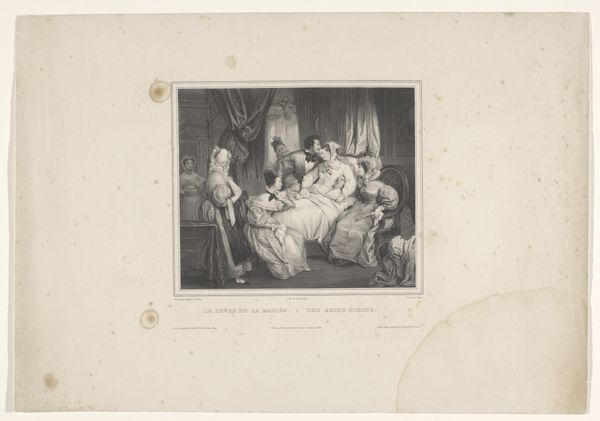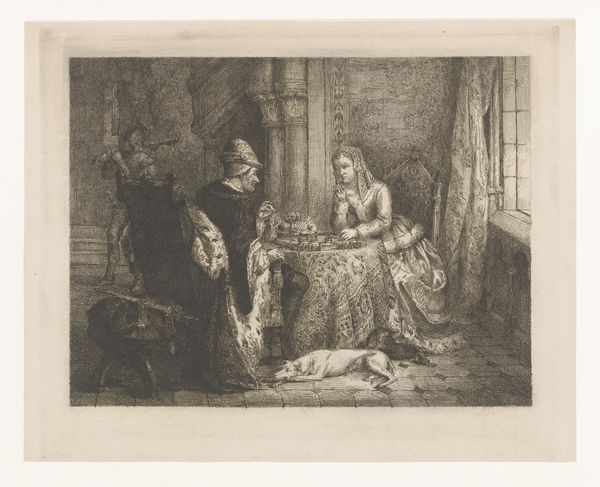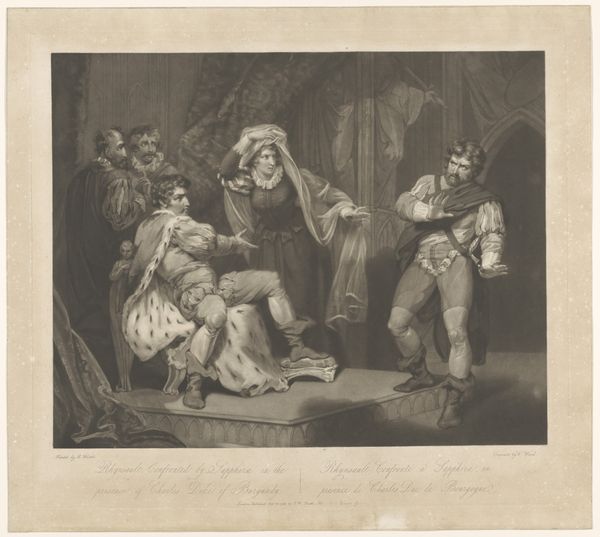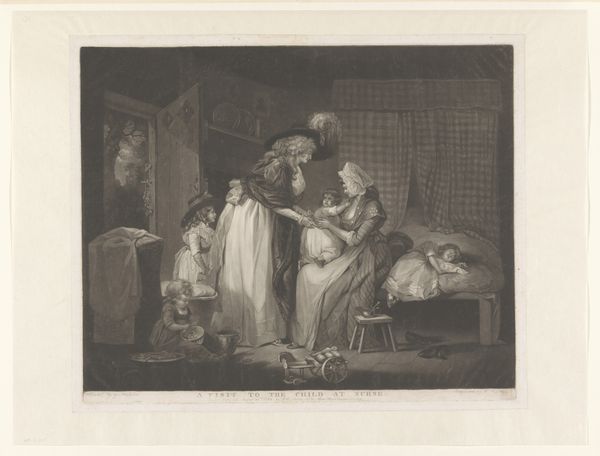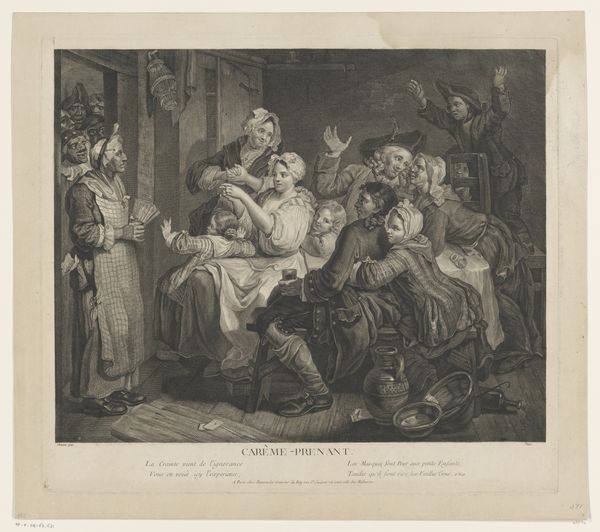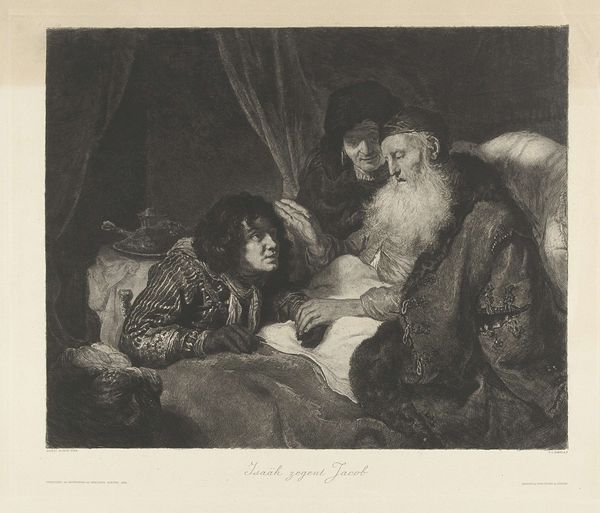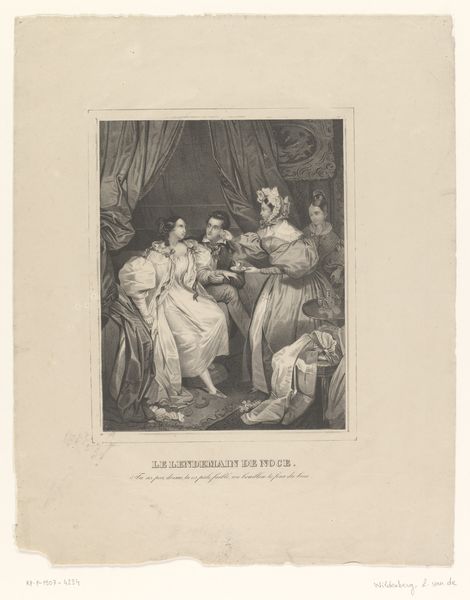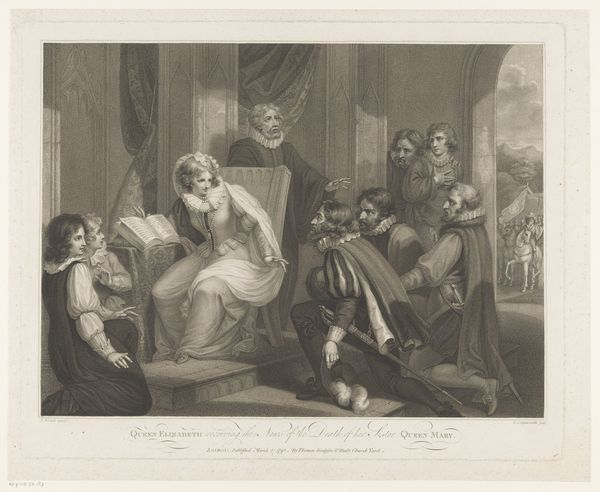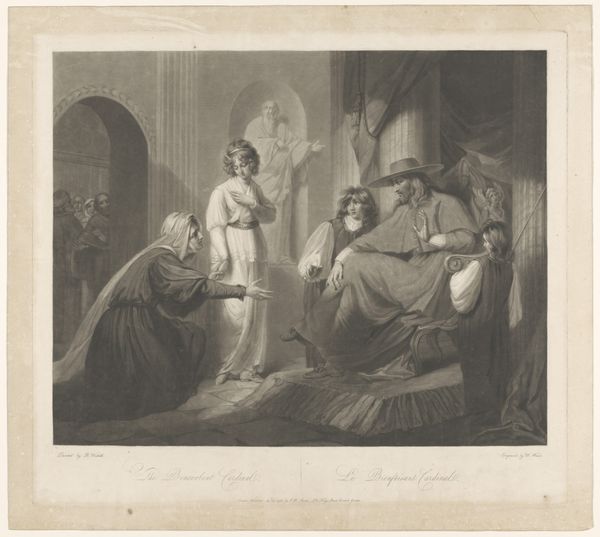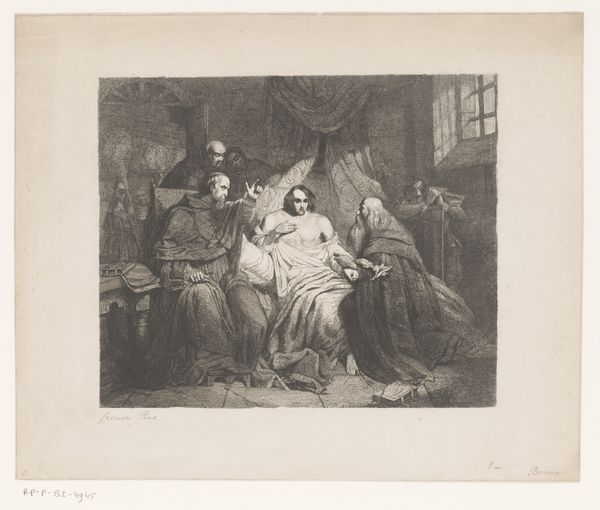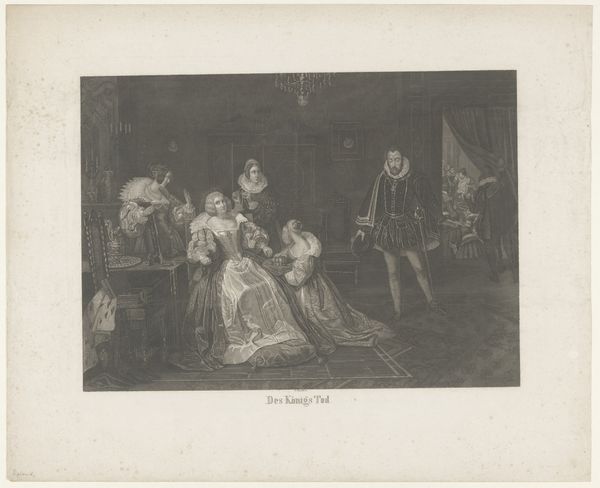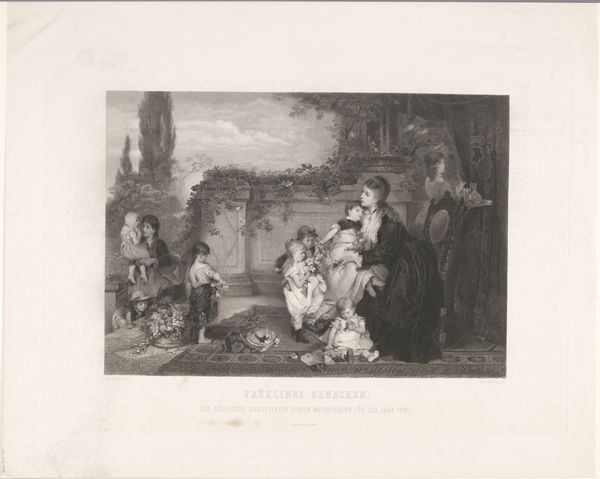
See, M. le Maréchal, I am Truly His Mother... 1820 - 1822
0:00
0:00
drawing, lithograph, print, etching, paper
#
portrait
#
drawing
#
mother
#
narrative-art
#
lithograph
# print
#
etching
#
paper
#
pencil drawing
#
history-painting
Dimensions: 238 × 374 mm (image); 414 × 580 mm (sheet)
Copyright: Public Domain
Curator: Standing before us is Jean Henri Marlet’s lithograph from circa 1820 to 1822, titled "See, M. le Maréchal, I am Truly His Mother...". It’s currently part of the collection here at the Art Institute of Chicago. Editor: It’s rendered in earth tones—sepia primarily, giving it a very solemn air. The figures appear to be in a dimly lit room, the scene bathed in a soft, almost reverent light. What’s the narrative here? Curator: The image depicts a scene brimming with historical weight. It's understood that it represents the Duchess de Berry presenting her newborn son, Henri, to a skeptical Marshal. Her pronouncement underscores the legitimacy of the Bourbon line. Editor: Note the placement of the subjects in the composition. The mother and child, the focus, are centrally located and bathed in more light, while the observing officers are pushed to the edges. There's definitely an intended focus created through strategic tonality and contrast. Curator: The image acts as a very specific visual statement about inheritance, power, and motherhood. The Duchess presenting her son serves a deliberate function, quelling doubts about the heir's identity in post-revolutionary France. It reflects a deeply rooted societal anxiety concerning rightful rulership. Editor: Anxiety indeed—there is a discernible tension here. But formally speaking, consider how Marlet used the medium— the lines appear almost sketch-like. What effect did that achieve in your opinion? Curator: This choice actually deepens the emotional complexity of the scene, almost rendering it as a recovered memory, rather than a posed portrait of authority. It makes it feel more immediate. It echoes the turmoil, rather than creating an idealized form. Editor: A persuasive point. It adds an almost documentarian realness. I initially thought the etching felt detached, due to the monochromatic palette and soft execution, but I’m starting to read that aesthetic as deliberately unvarnished. Curator: Absolutely, the apparent lack of grandiosity in execution ironically emphasizes the fragile and contested nature of royal power at that particular historical juncture. The artist chose a visual language of fragility to mirror the historical moment. Editor: This artwork truly underscores the capacity of seemingly straightforward historical representation to operate on multiple interpretive levels. A great image to consider what one brings when "seeing" the past. Curator: Indeed, thinking about the legacy that imagery possesses to reveal complex histories allows a different understanding and appreciation for this era.
Comments
No comments
Be the first to comment and join the conversation on the ultimate creative platform.
